2 Definitions, standards and books
2.1 Definitions
Definitions, terms, acronyms

The beginning of wisdom is the definition of terms. Socrates
Some definitions and acronyms:
5 M: Mothe nature, Material,Method, Manpower, Machine (Fishbone or Ishikawa diagram)
5 S: from Japanese Seiri = sort, Seiton = set in order, Seiso = shine, Seiketsu = standardize and Shitsuke = sustain
5 W: five times Why?
8 D: eight Do or eight actions to carry out. The 8 D tool is mainly used in the automotive industry. Allows a team to identify and eradicate the causes of a problem
A 3: report in A 3 visual management format on the essentials of problem solving or project progress
Agile system: when waste and cycle time are reduced
Analysis of material and information flows: see Value stream mapping
Andon: from Japanese light. Signal or light board that indicates the status of the process and alerts in the event of a problem
Anomaly: variation compared to what is expected
AV: added value
Benchmarking: comparative analysis technique against one or more competitors
Brainstorming: method allowing the development of ideas from the participants in order to find solutions
BSC: Balanced ScoreCard. Management dashboard with strategic indicators on finance, customers, processes and learning capacity
Chaku-chaku: from Japanese "charge-charge". Clocked flow working method which allows parts to be moved from one machine to another by loading/unloading
Conformity: fulfillment of a specified requirement
Continual flow: ideal state in which products move one by one without stopping
Control chart: statistical tool with high and low limits. Allows you to easily detect trends and malfunctions
Control plan: document describing the specific measures to carry out the control of a product or process
Control: see inspection
COQ: cost of obtaining quality
Corrective action: action to eliminate the causes of nonconformity or any other undesirable event and to prevent their recurrence
Criticality: level of a potential risk
CTQ: Critical To Quality or determinant for quality. Customer requirements transformed into internal specifications
Curative action: action to eliminate a detected nonconformity
Customer satisfaction: top priority objective of every quality management system related to the satisfaction of customer requirements
Customer: anyone who receives a product
CWQC: Company Wide Quality Control - quality control throughout the company
Cycle time: time between the release of the product from one process and the release of the next product
Dashboard: coherent set of indicators to measure performance and facilitate decision support
Defect: nonconformity related to a specified use
DMAIC: Determine, Measure, Analyze, Improve, Control. Six sigma approach to manage a problem and improve
Dysfunction: deviation in the ability of a functional unit to perform a specified function
Effectiveness: capacity to perform planned activities with minimum effort
Efficiency: financial relationship between achieved results and resources used
EFQM: European Foundation for Quality Management. Organization offering a model of excellence ("Sharing effective practices"). EFQM Annual Award
Fail safe device: system allowing the prevention of errors by eliminating the human factor, also called Poka-Yoké
Failure tree analysis (FTA): tree diagram analysis method (cause - effects) to avoid safety and reliability problems. See also Tree diagram
Failure: variation of aptitude of a functional unit to satisfy a specified function
FIFO: First In, First Out
Flow (stream): sequential execution of activities (tasks) along the value chain in a process
Flowchart: picture of a process that shows the steps performed and their interactions (see also ISO 22 000, 3.6; also called functional diagram and operational diagram)
FMEA: Failure Mode and Effects Analysis
Functional analysis: studies of the functions of a product or system in relation to its environment (see also NF X50-151)
Gemba walk: walk in the field, where it's happening. Favoring analysis in the field rather than in a meeting room
Gemba: from Japanese, = real place, in the field
Genchi genbutsu: from Japanese, to see how things are done in the field to gain practical experience of the situation
Goulet: resource whose average capacity is less than the requirement
Hansei: from Japanese, reflection session at the end of each activity. Opportunities for learning and sharing experience. One of the keys to Lean, when we will set new objectives
Heijunka: from Japanese smoothing. Organization of the queue to optimize the flow of different products using the same resources
Hoshin kanri: from Japanese deployment of politics. Strategic management analysis tool to concentrate efforts and resources on the deployment of priority objectives
IMS: integrated management system
Indicator: value of a parameter, associated with an objective, allowing the objective measure of its effectiveness
Interested party: person, group or organization affected by the impacts from a company
ISO: international organization for standardization
IT flow: uninterrupted progression of data in the value stream
Jidoka: from Japanese, autonomy or automation with a human touch (adding intelligence to a machine). Second pillar of Lean. Automatic detection of the first nonconformity, machine shutdown and problem reporting (Andon)
JIT: Just In Time
Kaizen: from Japanese, kai = change and zen = good (for the better, better), Kaizen = continual improvement
Kanban: from Japanese production order sheet or label. Inventory management by cards or sheets attached to product boxes to operate in pull flow ("takt time" set at the customer's request)
Kano diagram: graphical tool to understand customer interest in product specifications
Key Performance Indicator (KPI): monitoring a critical aspect of the company's overall performance to make strategic decisions
Lead time: total time from order acceptance to product shipping
Management system: set of processes allowing objectives to be achieved
Manager: someone who gets results through other people
Material and Information Flow Analysis (MIFA): see Value Stream Map
MCT: multiple choice test
Monitoring: set of planned actions to guarantee the effectiveness of control measures
Muda: from Japanese, waste. Any activity that consumes resources without adding value to the customer
Mura: from Japanese, irregularity. Waste caused by process variability
Muri: from Japanese, difficulty. Waste linked to excessive loading
Non-added value (NAV): what the customer is not willing to pay (when it is not necessary)
Nonconformity (NC): non-fulfillment of a specified requirement
Non-quality: gap between expected and perceived quality
Organization: structure that satisfies a need
Overall Equipment Effectiveness (OEE): indicator showing the machine utilization rate and hence the effectiveness of a production line
Pareto chart: graphical tool for classifying the effects (or causes) of an activity. Called the 80/20 principle: 80% of the effects originate from 20% of the causes
Poka-Yoké: from Japanese Poka – unintentional error, Yoké – avoid. See Fail safe device
Pool stock: quantity that allows small variations to be absorbed in a smooth environment
Preventive action: action to eliminate the potential causes of nonconformity or any other undesirable event and to prevent their appearance
Problem: gap that must be reduced to obtain a result
Process: activities that transform input into output
Product (or service): any result of a process or activity
Pull flow: essential requirement of the Just-in-Time approach. Produce only what the next process needs
Push flow: production without taking into account the real needs of the following process
QCD: Quality, Cost, Deadline. Classic top management objective. The customer is satisfied and the business is sustainable
QCDSE: Quality, Cost, Deadline, Safety, Environment
QM: quality manager
QMS: quality management system
QSE: quality, safety, environment
Quality Function Deployment (QFD): approach to identify customer requirements and transform them into internal requirements
Quality management system (QMS): everything necessary for the quality management of a company
Quality management: activities allowing the control of an organization with regard to quality
Quality objective: quality related, measurable goal that must be achieved
Quality policy: statement by top management allowing the establishment of quality objectives
Requirement: implicit or explicit need or expectation
Responsibility: capacity to make a decision alone
Risk: likelihood of occurrence of a threat or an opportunity
Safety: aptitude to avoid an undesired event
Scrap: treatment of an unrecoverable product
Sensei: from Japanese meaning “the one who was there before me, who guarantees the knowledge and experience of a technique or know-how” or, in other words, a master who delivers his teaching to a student
Shop stock: part of the stock of finished or semi-finished products which covers process risks: machine stoppages or defects
SIPOC: Suppliers, Inputs, Processes, Outputs, Customers. Tool to determine the priorities and scope of the product thanks to the links between the five entities
Six sigma: statistical approach to improving a process by reducing variability
SMED: Single Minute Exchange of Die or change a tool in less than ten minutes. Extremely effective method for reducing series changeover time
Spaghetti diagram: map of physical flows (product and labor) to obtain a product in a process
Stakeholder: person, group or company that can affect or be affected by an organization
Statistical Process Control (SPC): process control approach through the application of statistical techniques
Strategy: total approach to achieve objectives
Supplier: entity that provides a product
SWOT: Strengths, Weaknesses, Opportunities, Threats.Tool for structuring a risk analysis
System: set of interacting processes
Takt time: from German Takt – rhythm, from English Time – time. Time required to produce a product at the rate of customer demand
Theory Of Constraints (TOC): method for identifying and addressing bottlenecks
Top management (direction): group or persons responsible for management at the highest level of the company
Total Productive Maintenance (TPM): series of preventive measures for treating the causes of stoppages applied to production machines
Total Quality Control (TQC): continual improvement activities of all staff, at all levels
Tree diagram: graph showing the chain of causes of a problem
VA: value analysis
Value analysis: method of reducing activities without added value in design with the involvement of industrialization and quality departments
Value flow: specific activities to design, develop, produce and deliver a product
Value Stream Map (VSM): graphical tool to identify and analyze inventory and information flows, processes, bottlenecks, value added and non-value added to find opportunities for improvement, eliminate waste, solve problems
Visual management: displays in the field so that staff can see at a glance priorities, actions and their progress
VOC: Voice Of the Customer. Tool to determine what is important to the customer and prioritize their needs
Waste: anything that adds cost but not value
Work standard: sequences of activities, operations or tasks to be carried out without waste within a given time. Also called operating mode or work instruction
WWWWHHW: Who, What, Where, When, How, How much, Why
In the terminology used, do not confuse:
- accident and incident
- an accident is an unexpected serious event
- an incident is an event that can lead to an accident
- anomaly, defect, dysfunction, failure, nonconformity, reject and waste:
- an anomaly is a deviation from what is expected
- a defect is the non-fulfillment of a requirement related to an intended use
- a dysfunction is a degraded function that can lead to a failure
- a failure is when a function has become unfit
- a nonconformity is the non-fulfillment of a requirement in production
- a reject is a nonconforming product that will be destroyed
- waste is when there are added costs but no value
- audit program and plan
- an audit program is the annual planning of the audits
- an audit plan is the description of the audit activities
- audit, inspection, auditee and auditor
- an audit is the process of obtaining audit evidence
- an inspection is the conformity verification of a process or product
- an auditee is the one who is audited
- an auditor is the one who conducts the audit
- control and optimize
- to control is to meet the objectives
- to optimize is to search for the best possible results
- customer, external provider and subcontractor
- a customer receives a product
- an external provider provides a service or a product
- a subcontractor provides a product or service on which specific work is done
- effectiveness and efficiency
- effectiveness is the level of achievement of planned results
- efficiency is the ratio between results and resources
- follow-up and review
- follow-up is the verification of the obtained results of an action
- review is the analysis of the effectiveness in achieving objectives
- inform and communicate
- to inform is to give someone meaningful data
- to communicate is to pass on a message, to listen to the reaction and discuss
- objective and indicator
- an objective is a sought after commitment
- an indicator is the information on the difference between the pre-set objective and the achieved result
- organization and enterprise, society, company
- organization is the term used by the ISO 9001 standard as the entity between the supplier and the customer
- an enterprise, society and company are examples of organizations
- process, procedure, product, activity and task
- a process is how we satisfy the customer using people to achieve the objectives
- a procedure is the description of how we should conform to the rules
- a product is the result of a process
- an activity is a set of tasks
- a task is a sequence of simple operations
Remark 1: the most important thing is to determine a common and unequivocal vocabulary for everyone in the company.
Remark 2: the customer can also be the user, the beneficiary, the trigger, the ordering party or the consumer.
Remark 3: each time you use the expression "opportunity for improvement" instead of nonconformity, malfunction or failure, you will gain a little more trust from your interlocutor (external or internal customer).
For other definitions, comments, explanations and interpretations that you don’t find in this module and in annex 06, you can consult: 
.jpg)
- ISO Online Browsing platform (OBP)
- IEC Electropedia
2.2 Standards
Standards on quality, risks, FMEA

The ISO 9000 family of standards includes three essential booklets:
- ISO 9000 (2015): Quality management systems – Fundamentals and vocabulary
- ISO 9001 (2015): Quality management systems – Requirements
- ISO 9004 (2018): Guidelines for achieving sustained success
A standard added in 2002 and revised in 2018 is:
- ISO 19011: Guidelines for auditing management systems
The standards in the ISO 10001 to ISO 10019 series are guidelines for quality management systemsset of processes allowing the achievement of the quality objectives (see also ISO 9000, 3.2.3) and will help you find many answers (see ISO 9004: 2018, Bibliography).
Standards related to risks:
- ISO 31000: 2018, Risk management – Guidelines
- ISO 31010: 2009, Risk management – Risk assessment techniques
- ISO Guide 73: 2009, Risk management - Vocabulary
FMEA document:
- AIAG & VDA FMEA Handbook, AIAG, 2019
For automobiles:
- IATF 16949 - Quality management system requirements for automotive production and relevant service parts organizations, IATF, 2016
Other standards related to the quality approach:
- CEI 60812: Failure modes and effects analysis (FMEA and FMECA), IEC, 2018
- PAS 99: Specification of common management system requirements as a framework for integration, BSI, 2012
- The EFQM model, EFQM 2019
None of these standards are mandatory, but as Deming said:
It is not necessary to change. Survival is not mandatory
.jpg) Minute of relaxation. Cf. game: Standards
Minute of relaxation. Cf. game: Standards
2.3 Books
Books related to quality and Lean

When I think of all the books still left for me to read, I am certain of further happiness. Jules Renard
.jpg) Books for further reading on quality:
Books for further reading on quality:
 Armand V. Feigenbaum, Total Quality Control, McGraw-Hill, 1951
Armand V. Feigenbaum, Total Quality Control, McGraw-Hill, 1951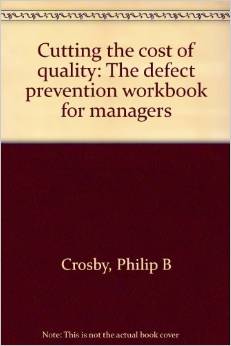 Philip B. Crosby, Cutting the Cost of Quality, The Defect Prevention Workbook for Managers, Industrial Education Institute, 1967
Philip B. Crosby, Cutting the Cost of Quality, The Defect Prevention Workbook for Managers, Industrial Education Institute, 1967 Kaoru Ishikawa, Guide to Quality Control, APO, 1971
Kaoru Ishikawa, Guide to Quality Control, APO, 1971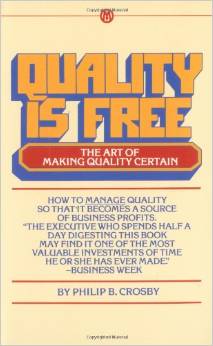 Philip B. Crosby, Quality is Free, Mentor, 1979
Philip B. Crosby, Quality is Free, Mentor, 1979 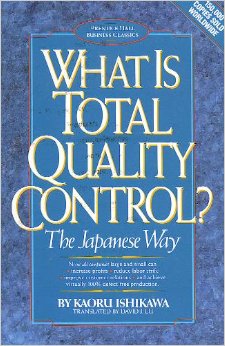 Kaoru Ishikawa, What Is Total Quality Control?, The Japanese Way, Prentice Hall, 1981
Kaoru Ishikawa, What Is Total Quality Control?, The Japanese Way, Prentice Hall, 1981 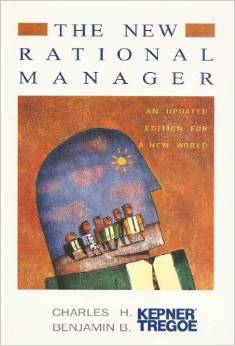 Charles Kepner, Benjamin Tregoe, The New Rational Manager, Princeton Research Press, 1981
Charles Kepner, Benjamin Tregoe, The New Rational Manager, Princeton Research Press, 1981 Edwards Deming, Out of the Crisis, MIT Press, 1982
Edwards Deming, Out of the Crisis, MIT Press, 1982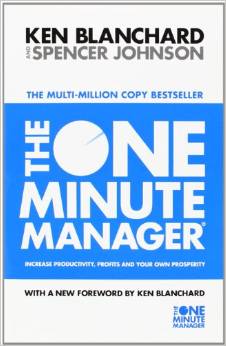 Kenneth Blanchard, Spencer Johnson, The One Minute Manager; The Quickest Way to Increase Your Own Prosperity, Berkley Books, 1982
Kenneth Blanchard, Spencer Johnson, The One Minute Manager; The Quickest Way to Increase Your Own Prosperity, Berkley Books, 1982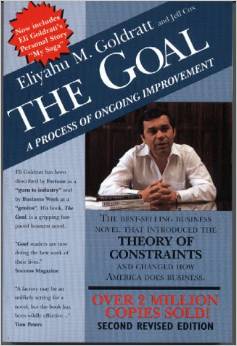 Eliyahu Goldratt, Jeff Cox, The Goal, A Process of Ongoing Improvement, North River Press, 1984
Eliyahu Goldratt, Jeff Cox, The Goal, A Process of Ongoing Improvement, North River Press, 1984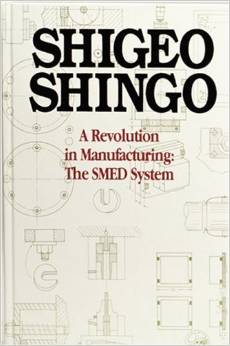 Shigeo Shingo, A Revolution in Manufacturing: The SMED System, Productivity press, 1985
Shigeo Shingo, A Revolution in Manufacturing: The SMED System, Productivity press, 1985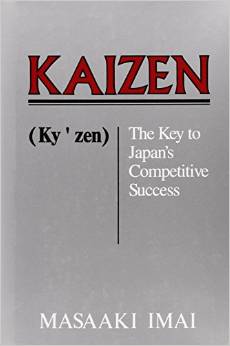 Masaaki Imai, KAIZEN, The key to Japan’s competitive success, McGraw-Hill, 1986
Masaaki Imai, KAIZEN, The key to Japan’s competitive success, McGraw-Hill, 1986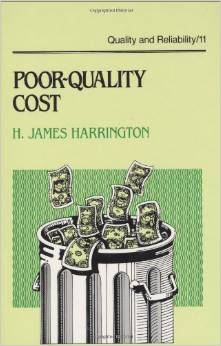 James H. Harrington, Poor-Quality Cost, Dekker, 1987
James H. Harrington, Poor-Quality Cost, Dekker, 1987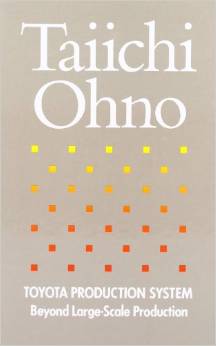 Taiichi Ohno, Toyota Production System: Beyond Large-Scale Production, Productivity Press, 1988
Taiichi Ohno, Toyota Production System: Beyond Large-Scale Production, Productivity Press, 1988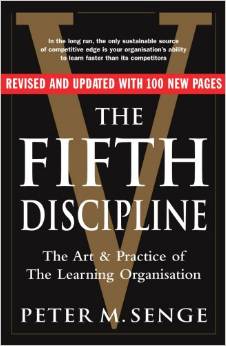 Peter Senge, The Fifth Discipline, The Art & Practice of The Learning Organization, Doubleday 1990
Peter Senge, The Fifth Discipline, The Art & Practice of The Learning Organization, Doubleday 1990 Edwards Deming, The New Economics, MIT Press 1993
Edwards Deming, The New Economics, MIT Press 1993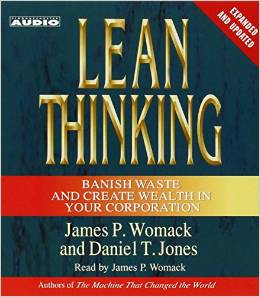 James Womack, Daniel Jones, Lean Thinking, Simon & Schuster, 1996
James Womack, Daniel Jones, Lean Thinking, Simon & Schuster, 1996.jpg) Masaaki Imai, GEMBA KAIZEN, A Commonsense Low-Cost Approach to management, McGraw-Hill, 1997
Masaaki Imai, GEMBA KAIZEN, A Commonsense Low-Cost Approach to management, McGraw-Hill, 1997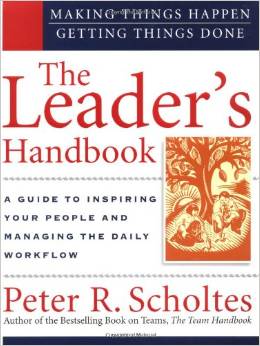 Peter Scholtes, The Leader’s Handbook, McGraw-Hill, 1997
Peter Scholtes, The Leader’s Handbook, McGraw-Hill, 1997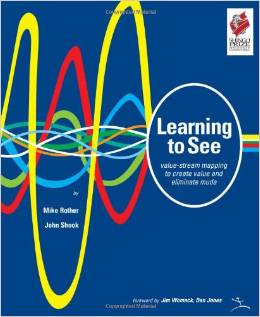 Mike Rother, John Shook, Learning to See, Lean Enterprise Institute, 1999
Mike Rother, John Shook, Learning to See, Lean Enterprise Institute, 1999 Rich Teerlink, Lee Ozley, More Than a Motorcycle, The Leadership Journey at Harley-Davidson, Harvard Business School Press, 2000
Rich Teerlink, Lee Ozley, More Than a Motorcycle, The Leadership Journey at Harley-Davidson, Harvard Business School Press, 2000_1.jpg) Jim Collins, Good to Great, Random House, 2001
Jim Collins, Good to Great, Random House, 2001_1.jpg) Chet Marchwinski, John Shook, Lean Lexicon, a Graphical Glossary for Lean Thinkers, Lean Enterprise Institute, 2003
Chet Marchwinski, John Shook, Lean Lexicon, a Graphical Glossary for Lean Thinkers, Lean Enterprise Institute, 2003_1.jpg) John Drew, Blair McCallum, Stefan Roggenhofer, Journey to Lean, McKinsey&Company, 2004
John Drew, Blair McCallum, Stefan Roggenhofer, Journey to Lean, McKinsey&Company, 2004_1.jpg) Larry Rubrich, How to Prevent Lean Implementation Failures, WCM Associates, 2004
Larry Rubrich, How to Prevent Lean Implementation Failures, WCM Associates, 2004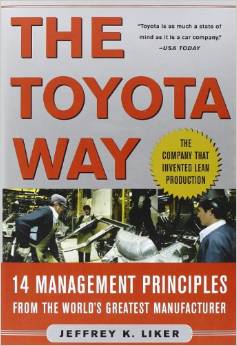 Jeffrey Liker, The Toyota Way, McGraw Hill, 2004
Jeffrey Liker, The Toyota Way, McGraw Hill, 2004_1.jpg) Michael George et al, The Lean Six Sigma Pocket Toolbook, Mc Graw Hill, 2005
Michael George et al, The Lean Six Sigma Pocket Toolbook, Mc Graw Hill, 2005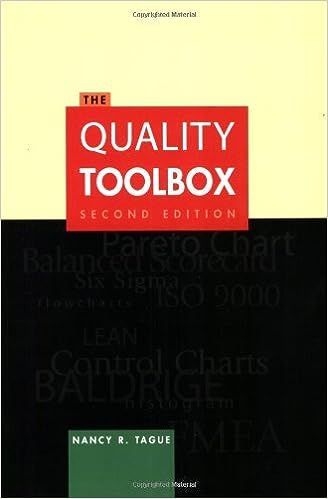 Nancy Tague, The Quality Toolbox, ASQ Quality Press, 2005
Nancy Tague, The Quality Toolbox, ASQ Quality Press, 2005_1.jpg) Jamie Flinchbaugh, Andy Carlino, The Hitchhiker’s Guide to Lean, Lessons from the Road, SME, 2006
Jamie Flinchbaugh, Andy Carlino, The Hitchhiker’s Guide to Lean, Lessons from the Road, SME, 2006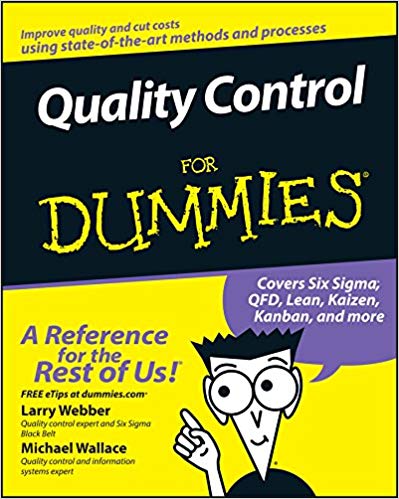 Larry Webber, Michael Wallace, Quality Control for Dummies, Wiley, 2007
Larry Webber, Michael Wallace, Quality Control for Dummies, Wiley, 2007_1.jpg) John Bicheno, Matthias Holweg, The Lean Toolbox, PICSIE, 2009
John Bicheno, Matthias Holweg, The Lean Toolbox, PICSIE, 2009_1.jpg) George Koenigsaecker, Leading the Lean Enterprise Transformation, CRC Press, 2009
George Koenigsaecker, Leading the Lean Enterprise Transformation, CRC Press, 2009_1.jpg) Association for Manufacturing Excellence, Sustaining Lean, Case Studies in Transforming Culture, CRC Press, 2009
Association for Manufacturing Excellence, Sustaining Lean, Case Studies in Transforming Culture, CRC Press, 2009_1.jpg) Michael Ballé, Freddy Ballé, The Lean Manager, a Novel of Lean Transformation, Lean Enterprise Institute, 2009
Michael Ballé, Freddy Ballé, The Lean Manager, a Novel of Lean Transformation, Lean Enterprise Institute, 2009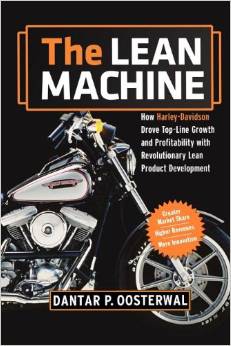 Dantar Oosterwal, The Lean Machine, Amacom, 2010
Dantar Oosterwal, The Lean Machine, Amacom, 2010_1.jpg) Lonnie Wilson, How to Implement Lean Manufacturing, McGraw Hill, 2010
Lonnie Wilson, How to Implement Lean Manufacturing, McGraw Hill, 2010_1.jpg) Nathalie Sayer, Bruce Williams, Lean for Dummies, Wiley, 2012
Nathalie Sayer, Bruce Williams, Lean for Dummies, Wiley, 2012_1.jpg) Employee X, Look Before you Lean, The Nobby Works, 2013
Employee X, Look Before you Lean, The Nobby Works, 2013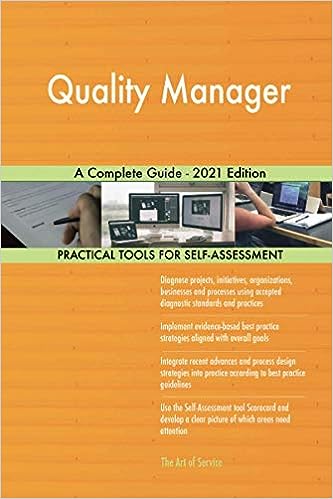 Team, Quality Manager A Complete Guide - 2021 Edition, The Art of Service - Quality Manager Publishing, 2020
Team, Quality Manager A Complete Guide - 2021 Edition, The Art of Service - Quality Manager Publishing, 2020 Massimiliano Mazzei, Being a Quality Manager: Quality Manager's Notebook, Independently published, 2023
Massimiliano Mazzei, Being a Quality Manager: Quality Manager's Notebook, Independently published, 2023
.jpg) Minute of relaxation. Paganini's violin concert performed with facial expressions.
Minute of relaxation. Paganini's violin concert performed with facial expressions.
